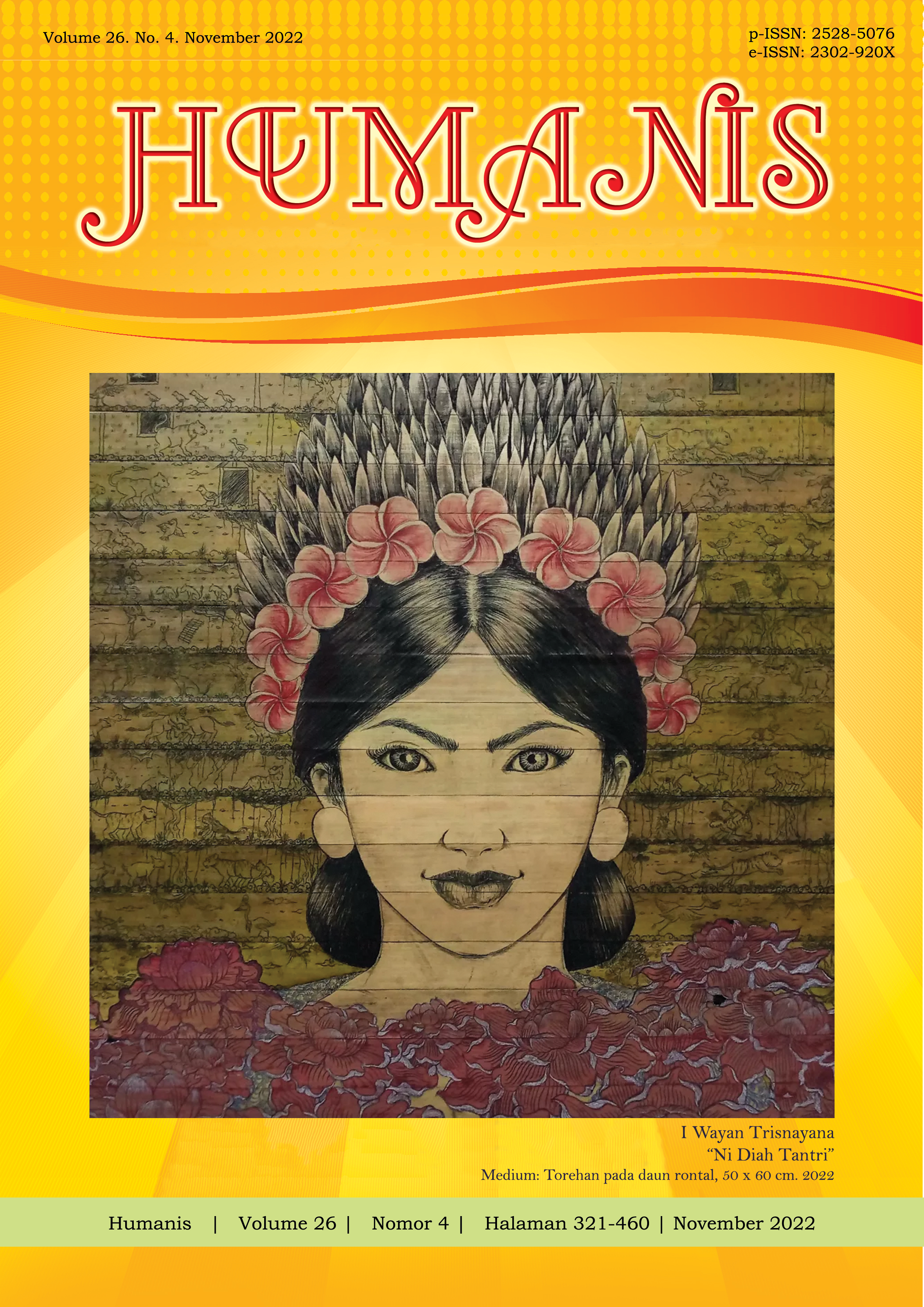Cinderella Weight: Tirani Standar Kecantikan dan Body Image di Kalangan Wanita Muda Jepang
Abstract
As a result of the "kawaii" trend, having a slim body has become one of the beauty standards coveted by young Japanese women. One of the latest diet trend in 2016 and 2018 was the Cinderella weight, a weight standard that is considered as dangerous because the weight count is below the healthy BMI (Body Mass Index). This research was conducted using descriptive qualitative methods and video interviews from the Ask Japanese YouTube channel (2016, 2020, and 2022) regarding Cinderella weight and ideal body weight of young Japanese women were taken as the main data sources. The Theory of Social Construction of Women's Bodies by Sandra Lee Bartky (1990) was used to analyze this phenomenon and prove that beauty is a form of social construction. It was found that numerous of them idealizing Cinderella weight and being slim is still the desire of the majority of young Japanese women. The role of social media and mass media, which feature many female models and artists who are slim also inseparable for the influence.
Downloads
References
Ask Japanese. (2016). What's a Japanese girl's IDEAL BODY? How tall to be and how much to weigh in Japan. https://www.youtube.com/watch?v=Bng4BFP3G08 (Diakses pada 26 Juli 2022)
Ask Japanese. (2020). Japan's shocking weight trend: The Cinderella Syndrome. https://www.youtube.com/watch?v=z8RGlStVvIg&t=579s (Diakses pada 11 Juli 2022)
Ask Japanese. (2020). Chubby VS Skinny: What girls are popular in Japan?. https://www.youtube.com/watch?v=X68ltvuU3aI (Diakses pada 23 Agustus 2022)
Ask Japanese. (2022). Horrible WEIGHT LOSS TREND in Japan: The Cinderella Diet. https://www.youtube.com/watch?v=xCPNyo-b7tE (Diakses pada 23 Agustus 2022)
Bartky, Sandra Lee (1990). Foucault, Femininity, and the Modernization of Patriarchal Power. In Femininity And Domination: Studies In The Phenomenology Of Oppression. Routledge.
Baseel, Casey. (2018). Japan's extra-slim 'Cinderella weight' diet target sparks debate online. Japan Today. https://japantoday.com/category/features/lifestyle/japan%E2%80%99s-extra-slim-%27cinderella-weight%27-diet-target-sparks-debate-online (Diakses pada 11 Juli 2022)
Basrowi, & Suwandi. (2008). Memahami Penelitian Kualitatif. Jakarta: Rineka Cipta.
Creswell, J. W. (1998). Qualitative Inquiry and Research Design, Choosing Among Five Traditions. California: Sage Publications.
Dion, K., Berscheid, E., & Walster, E. (1972). What is beautiful is good. Journal of Personality and Social Psychology, 24(3), 285–290. https://doi.org/10.1037/h0033731
Hamidi. (2004). Metode Penelitian Kualitatif: Aplikasi Praktis Pembuatan Proposal dan Laporan Penelitian. Malang: UMM Press.
Haworth, Abigail. (2017). Japan’s pocchari trend celebrates ‘chubby’ women. The Guardian. https://www.theguardian.com/lifeandstyle/2014/oct/20/japan-pocchari-trend-women-fat-shaming-stereotypes (Diakses pada 7 November 2022)
Ivada, D., Restu Darmawan, D., & Novianti, N. (2022). Beauty Care Kebutuhan Kultural Perempuan Metropolitan. Humanis, 26(3), 216. https://doi.org/10.24843/jh.2022.v26.i03.p02
Jones, Gina. (2015). 5 Lessons Magazines Could Learn From 'La Farfa'. Bustle. https://www.bustle.com/articles/107256-5-lessons-la-farfa-japanese-plus-size-magazine-could-teach-western-publications (Diakses pada 20 September 2022)
Kittaka, Louise George. (2017). Where Super-Thin is Still In: Attitudes to Body Image in Japan. Gaijinpot. https://blog.gaijinpot.com/attitudes-to-body-image-japan/ (Diakses pada 8 Juli 2022)
Kittaka, Louise George. (2020). In Japan, One Size Does Not Fit All Women. Savvy Tokyo. https://savvytokyo.com/in-japan-one-size-does-not-fit-all-women/ (Diakses pada 7 November 2022)
Magnúsdóttir, Laufey. (2015). Alluring Faces: Beauty Standards in Japanese Society through the Ages. University of Iceland.
Mase, T., Miyawaki, C., Ohara, K., & Nakamura, H. (2015). The Relationships among Perception of Body Image, a Desire for Thinness, and Dieting Behavior in Young Females in Japan. Health, 07(01), 112–118. https://doi.org/10.4236/health.2015.71013
Mase, T., Ohara, K., Miyawaki, C., Kouda, K., & Nakamura, H. (2015). Influences of peers’ and family members’ body shapes on perception of body image and desire for thinness in Japanese female students. International Journal of Women’s Health, 2015:7, 625–633. https://doi.org/10.2147/ijwh.s82193
Miller, Laura. (2008). Japan's Cinderella Motif: Beauty Industry and Mass Culture Interpretations of a Popular Icon, Asian Studies Review, 32:3, 393-409. https://doi.org/10.1080/10357820802295955
Ministry of Health and Welfare. (2019). The National Health and Nutrition Survey (NHNS) 2019. https://www.nibiohn.go.jp/eiken/kenkounippon21/download_files/eiyouchousa/2019.pdf
Yamamiya, Y., & Suzuki, T. (2021). Beauty Standards and Body Image Issues in The West and Japan from a Cultural Perspective [E-book]. In M. L. Craig (Ed.), 978-0-367-24657-0 (pp. 112–118). Routledge.
The Korea Herald. (2016). 日, ‘미용체중’에 이어 ‘신데렐라 체중’까지. . .도 넘은 다이어트 열풍. http://news.heraldcorp.com/view.php?ud=20160317000253 (Diakses pada 4 Oktober 2022)
The Mainichi. (2022). Japan gov't to launch survey on weight, dietary habits of young women. https://mainichi.jp/english/articles/20220704/p2g/00m/0na/046000c (Diakses pada 7 Juli 2022)
Vassiljeva, Ksenia. (2016). In pursuit of “Ideal”: A contemporary vision of Japanese body aesthetic. University of Iceland.


















